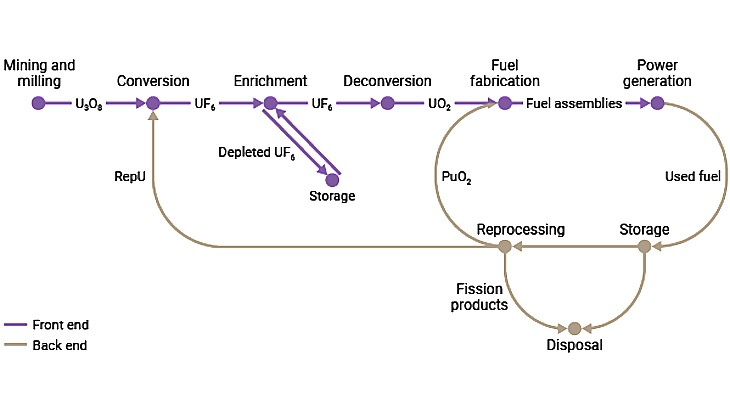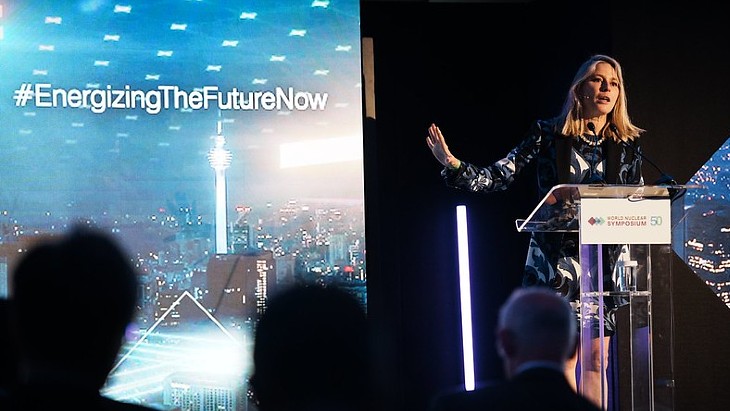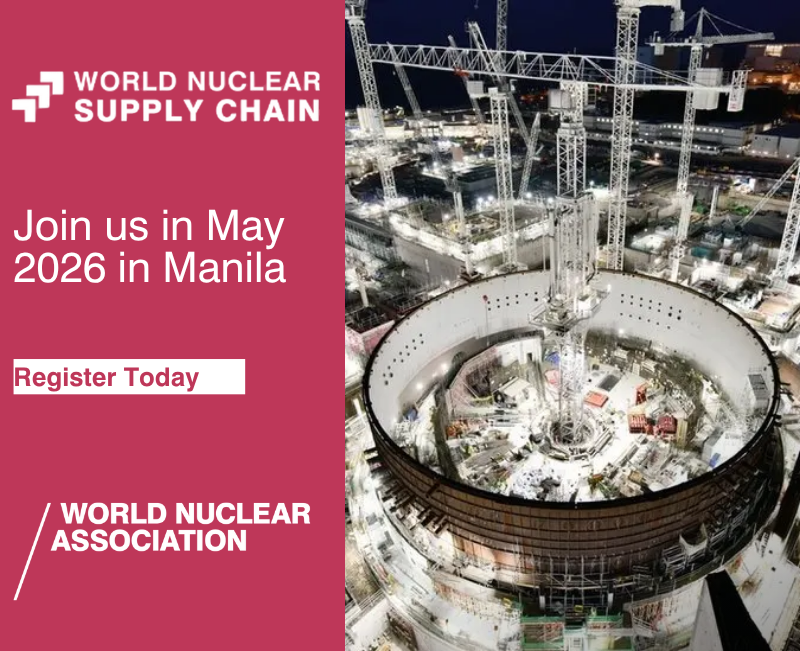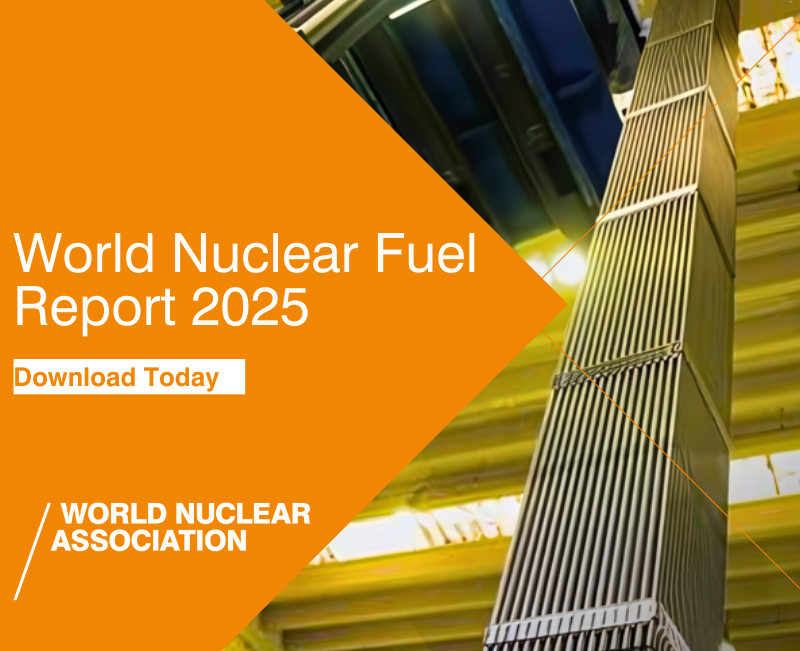The project was part of TVEL, Rosatom’s fuel division’s, separation equipment modernisation programme and took place with a phased replacement of previous generation gas centrifuges with generation 9+ ones, it said.
Sergey Filimonov, Director General, said: "It is symbolic that a significant historical milestone in the modernisation of the main equipment was reached in the year of the 80th anniversary of the nuclear industry. The technical re-equipment of our enterprise is significant for the successful implementation of the production programme of the Fuel Division of Rosatom in the coming years, including for providing nuclear fuel for new nuclear power units of Russian design in the country and abroad."
Backgound
Unenriched, or natural, uranium contains about 0.7% of the fissile uranium-235 (U-235) isotope. ("Fissile" means it's capable of undergoing the fission process by which energy is produced in a nuclear reactor). The rest is the non-fissile uranium-238 isotope. Most nuclear reactors need fuel containing between 3.5% and 5% U-235. This is also known as low-enriched uranium, or LEU. Advanced reactor designs that are now being developed - and many small modular reactors - will require higher enrichments still. This material, containing between 5% and 20% U-235 - is known as high-assay low-enriched uranium, or HALEU. And some reactors - for example the Canadian-designed Candu - use natural uranium as their fuel and don’t require enrichment services.
Enrichment increases the concentration of the fissile isotope by passing the gaseous UF6 through gas centrifuges, in which a fast spinning rotor inside a vacuum casing makes use of the very slight difference in mass between the fissile and non-fissile isotopes to separate them. As the rotor spins, the concentration of molecules containing heavier, non-fissile, isotopes near the outer wall of the cylinder increases, with a corresponding increase in the concentration of molecules containing the lighter U-235 isotope towards the centre. For more detail: A guide: Uranium and the nuclear fuel cycle


_65383.jpg)



_69218.jpg)

_50545.jpg)
_28367.jpg)
_76087_55556.jpg)




